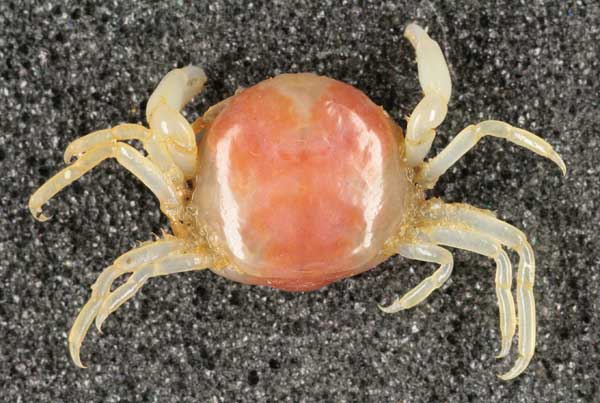
Chances are, if you’re an oyster lover you’ve come across a pea crab or two in your day. But, to the oyster newbie these little ocean treats can be an unexpected surprise. In reality, the pea crab is a rare delicacy that many people are unfamiliar with.
Meet the Pea Crab
Pea crabs (Pinnotheres Ostreum) or oyster crabs (Zaops ostreus) are soft bodied crabs that live in bivalves like oysters and mussels. They’re kleptoparasites meaning they seal food from hosts to survive. Both varieties behave similarly and are generally referred to as pea crabs. They live inside the oyster’s gills, feeding on the food that filters in.
Pea crabs generally find a host when both are still larvae. Male pea crabs remain free swimming for life, while females will find a host and stay until maturity laying eggs inside.
Amazingly, the presence of a pea crab does not increase the likelihood of an oyster dying. In fact, they seem to cause very little damage overall. However, the oyster’s gills can be damaged and during times of low food availability it will cause the oyster’s meat to become thin. Generally speaking, while their relationship is scientifically described as parasitic, in most cases both the oyster and the pea crab thrive.
Pea Crab Prominence
Pea crabs are found primarily on the Atlantic coast, spanning from North America to Brazil and along the Pacific coast. However, they tend to be more prominent in certain areas. A recent study showed that pea crabs tend to gravitate to larger spats of oysters. For example, one of the densest pea crab populations was along the Georgia/South Carolina coast, which also has an incredibly high level of natural oyster spat.
I Found a Pea Crab. Now What?
While they can look a bit off-putting, pea crabs are considered a delicacy and should be enjoyed. Historians and foodies alike agree that finding a pea crab isn’t just a small treat, it’s also a sign of good luck. Pea crabs are a sign of healthy oyster populations in quality water. Historically, they’re considered lucky in the south and are highly sought by celebrity chefs and even our nation’s first president George Washington.
So, the next time you find a pea crab in your oyster, smile and enjoy!
Sources:
J.E. Byers, T.L. Rogers, J.H. Grabowski, et. al., Host and Parasite recruitment correlated at a regional scale, Oecologia (2014) 174:731-738.
A.M. Christensen, J.J. McDermott., Life-history and biology of the oyster crab, pinnotheres ostreum say, Biol Bull 114:146-179.
← Older post Newer post →

I found one! And I ate it! Cute little bugger – not a lot of taste, however, just a minute crunch. I was glad this post was on your site or I might not have know what they were.